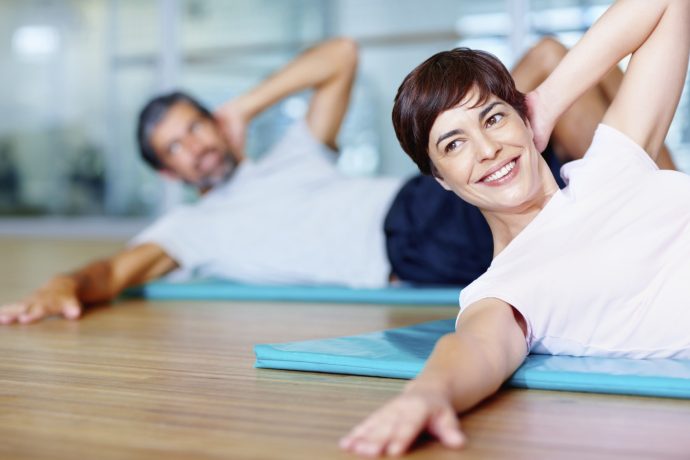Most of us know we need to exercise but have difficulty getting motivated to do it. Research is giving us a lot of encouragement. Recent research indicates that even small amount of exercise make a big difference in health and fitness. It suggests that exercise doesn’t have to last a half hour or more to receive major benefits. And it is indicating that even mild exercise such as walking is very helpful. These findings make it more appealing to exercise as even very modest efforts help.
So how to get started? If you are a total couch potato, pick a goal that is so ridiculously modest that it is easier to do it than to argue with yourself about it. For example you might set as a goal to do ten sit ups, or walk to the end of the block and back, or ride the exercise bicycle for two minutes. Stick with that for a couple of weeks so it becomes a habit, e.g., doing that two minutes of exercise before dinner. Then gradually increase the goal each week, e.g., adding another minute of exercise or a little more distance. In several months, the habit will have gradually increased to level that gives you a good workout.
Journalism’s why questions can help you identify the contexts that make it easy for you to exercise. Journalists ask who, what, when, where, and why.
WHO: Ask yourself whether you enjoy exercising more with others, by yourself, or with the vicarious company of a videotape.
WHAT: Do you crave variety or do you appreciate the stability of doing the same routine every day? If you need variety, have a large menu of exercises to choose from. If you like routine, do the same exercises at the same time every day. What activities would you most enjoy doing for: an aerobic workout? a strength workout? flexibility? any special health problems? (One exercise or sport may cover several functions.)
WHEN: Are you a lark or a dove? Are you more likely to do and to enjoy exercising early in the morning, or at some other time of the day?
WHERE: Would you particularly enjoy the convenience and all weather advantages of exercising at home or the joy of embracing nature by exercising outdoors, or the dedicated atmosphere of a gym or spa with other people also working out?
WHY: When you make an image of the benefits of exercising what do you see? Is the image so compelling that you shout, “I want that-got to have it?” If not, keep working on the image. It is important that the image focus on the results you want (e.g., looking fit, weighing less), not on the process, (e.g., seeing yourself sweating on a treadmill).
Clarity about the five why questions can help you develop an exercise program that is motivating for you. As actress Helen Hayes put it, “If you rest, you rust.”






